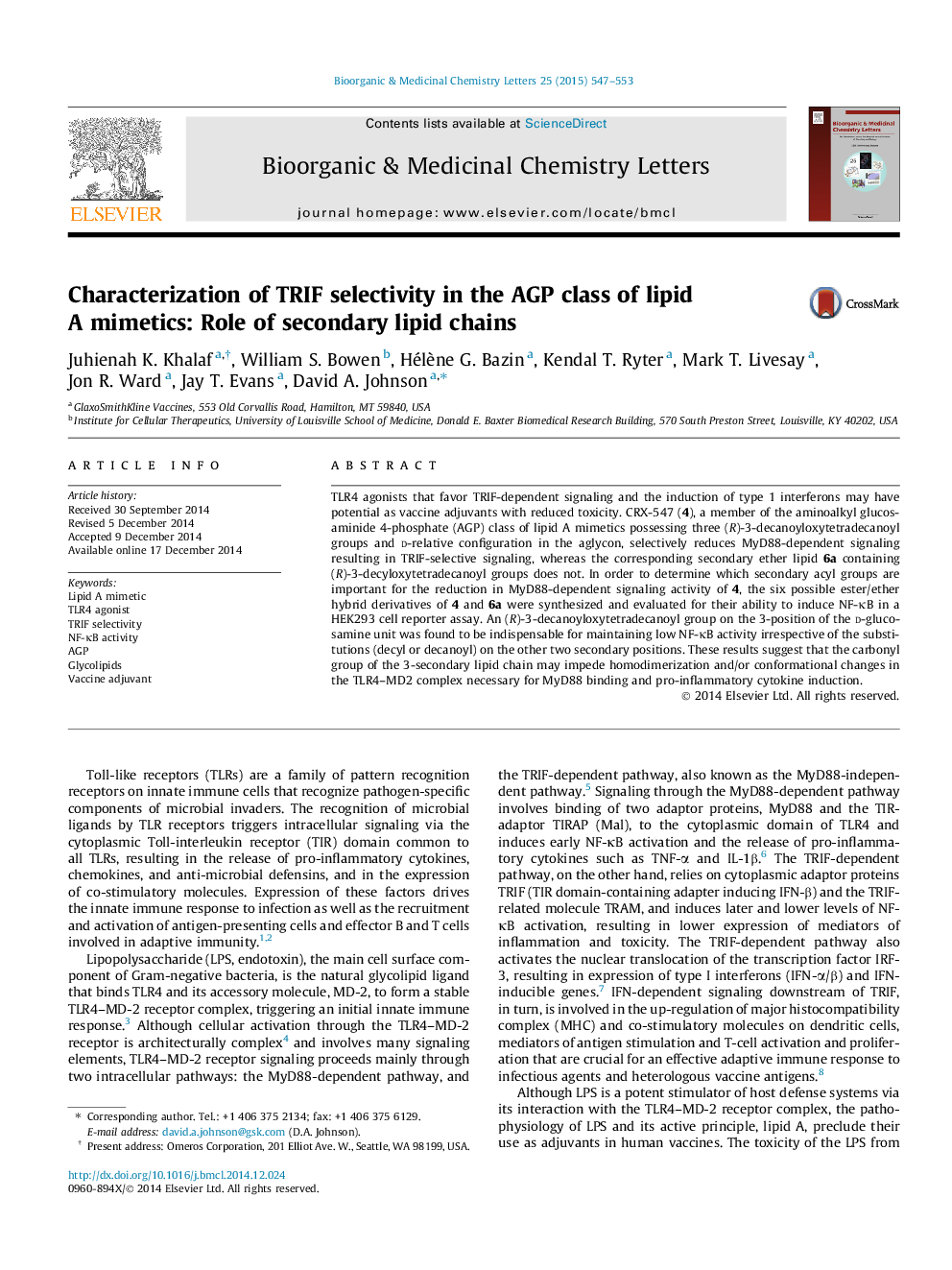| Article ID | Journal | Published Year | Pages | File Type |
|---|---|---|---|---|
| 1371301 | Bioorganic & Medicinal Chemistry Letters | 2015 | 7 Pages |
TLR4 agonists that favor TRIF-dependent signaling and the induction of type 1 interferons may have potential as vaccine adjuvants with reduced toxicity. CRX-547 (4), a member of the aminoalkyl glucosaminide 4-phosphate (AGP) class of lipid A mimetics possessing three (R)-3-decanoyloxytetradecanoyl groups and d-relative configuration in the aglycon, selectively reduces MyD88-dependent signaling resulting in TRIF-selective signaling, whereas the corresponding secondary ether lipid 6a containing (R)-3-decyloxytetradecanoyl groups does not. In order to determine which secondary acyl groups are important for the reduction in MyD88-dependent signaling activity of 4, the six possible ester/ether hybrid derivatives of 4 and 6a were synthesized and evaluated for their ability to induce NF-κB in a HEK293 cell reporter assay. An (R)-3-decanoyloxytetradecanoyl group on the 3-position of the d-glucosamine unit was found to be indispensable for maintaining low NF-κB activity irrespective of the substitutions (decyl or decanoyl) on the other two secondary positions. These results suggest that the carbonyl group of the 3-secondary lipid chain may impede homodimerization and/or conformational changes in the TLR4–MD2 complex necessary for MyD88 binding and pro-inflammatory cytokine induction.
Graphical abstractFigure optionsDownload full-size imageDownload as PowerPoint slide
